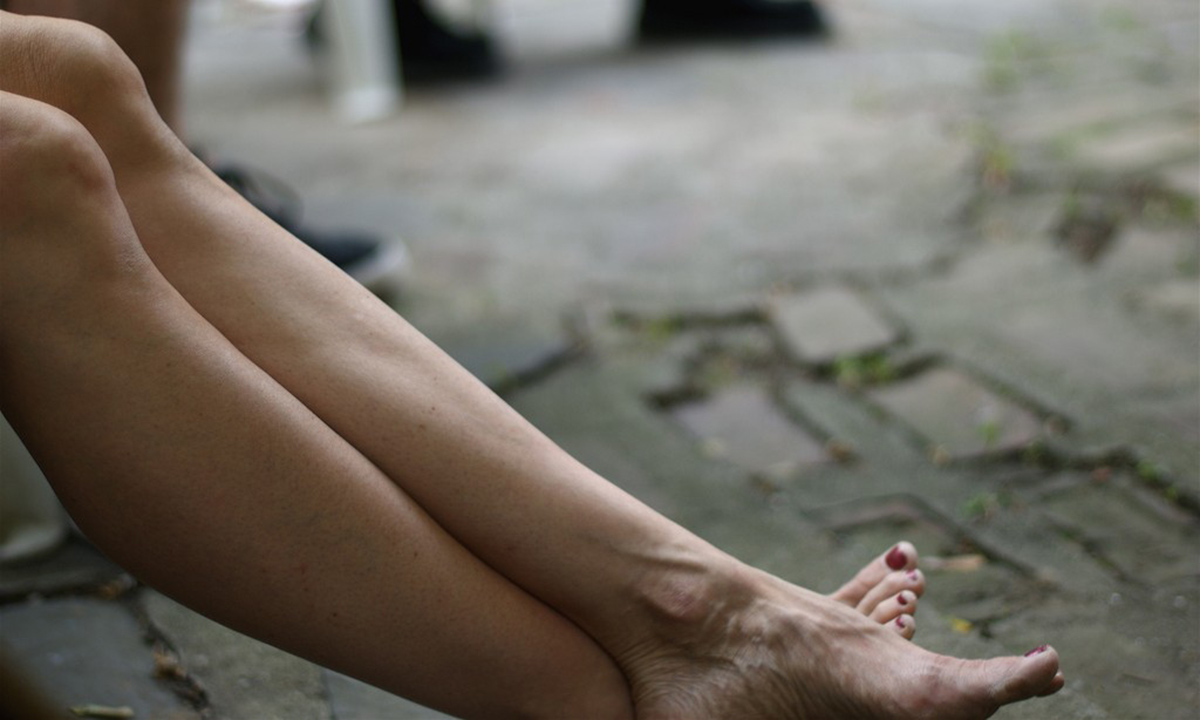Table of Contents
First of all, don't run.
Whichever 'flavor' of MTSS you have, they're all caused by repetitive impact and torsion. Plan to be out of running for six to eight weeks.

That doesn't mean you can't train: exactly the opposite. you should be getting on top of this injury right from the get-go. Here are some treatment tips. Underneath each, you'll see the types of injury they're good for. Don't see yours on the list? Skip that exercise.
1: Calf raises
Muscle tears, compartment syndrome
You're going to do single-leg negative calf raises with a full range of motion under control. Use one leg to get you to the top of the movement then lower yourself slowly under control to the most dorsiflexed position you can hold with voluntary contraction going on in the muscle: don't just hang there on your soft tissue structures, you'll make it worse.
Do a set with the knee almost, but not quite, locked out, as this strengthens different muscles in your calf. I know your pain's not in your calf - but stronger calf muscles means more stable foot striking when you get back to running.
2: Toe circles
Muscle tears, compartment syndrome, stress fractures
You partly got this injury by having poor motor control over your feet. Take your socks off and sit. Extend one foot and draw the biggest circle you can moving only your foot from your ankle. If you've never done this before, you'll be shocked how little control you have and how hard the movement is! Expect some slight cramping. To begin with this is a strength as well as a mobility move. Draw circles in both directions. Rather than go for a certain number of reps, go for a perfect circle and try to do this one several times a day.
3: Dancer's walks
Muscle Tears, compartment syndrome, stress fractures (be careful!)
Stand on the balls of your feet, and flex your feet as much as you can, so you're standing tall. Straighten your legs as much as you can and slowly walk. A few steps is enough for most people to start off with, but improve gradually. You're building awareness, movement and strength in the soles of your feet and your calves, but you're also improving your conscious ankle stability - a key factor in avoiding injury.
4: Deep slow massage
Compartment syndrome, muscle tears - NOT stress fractures!
You can use your hands, or a small ball like a golf, tennis, lacrosse or even a baseball. Find the part where it hurts and start slightly above it. Slowly massage down, increasing and then decreasing the pressure. This should be somewhere between uncomfortable and painful - if it's agony, stop! The idea is to stretch out the compartment's sheath, the fibrous wall that's holding everything in place a little too tightly, and to relieve some of the pressure. So you can expect the pain to get worse while yo're doing it - but it should get better after you've done it a few times. Stick at it.
5: Kneeling calf stretch
Muscle tears, compartment syndrome
Kneel on one leg, facing a wall, with your front toes touching the wall. Move forward without letting your front heel off the ground until your knee touches the wall. This should stretch out the back of your calf, but it should also involve the front of your calf.
6: Walking
Muscle tears, compartment syndrome, stress fracture
Walk for between 30 and 90 minutes a couple of times a week. No, I know it's not running, but it will help to keep your basic aerobic fitness in some kind of shape - you'd be surprised the difference it makes to your stress levels too. And it will keep your metabolism turned up.
See Also: Tired Of Extreme Fatigue, Sleeplessness And Muscle Pain? Beat Your Catabolic State
7: Foam rolling
Easing muscle tightness and preventing compartment syndrome.
Using a foam roller, roll over your calf and anterior shin muscles to release tightness. Apply gentle pressure and move slowly, spending extra time on particularly sore or tight areas. This promotes blood flow and muscle relaxation.
8: Ankle alphabet
Increasing ankle mobility and reducing strain on the shins.
Sit down and extend one leg. Draw the alphabet in the air using only your ankle movements. This exercise promotes flexibility and strength in the ankle joint, reducing the risk of injuries that could lead to shin pain.
9: Eccentric calf drops
Strengthening calf muscles and reducing stress on the shin bone.
Stand on a step with your heels hanging off the edge. Raise both heels by pushing up onto your toes, then lift one foot off the step. Slowly lower the heel of the standing foot down below the step level. This controlled descent (eccentric movement) is crucial in strengthening the calf muscles, reducing the risk of associated shin pain.
Hopefully, if you follow these tips yo'll be running again soon - a few weeks in the case of milder soft tissue injuries, a few months in the case of stress fractures which can take up to a year for the bone to return to full health.
If you've found these tips useful, or you have a comment to make or a story to tell (or a bone to pick!) get in touch below.
- Photo courtesy of frphoto1 by Flickr : www.flickr.com/photos/frphoto1/13557660505
- Photo courtesy of kizzzbeth by Flickr : www.flickr.com/photos/31403417@N00/5899019139


Your thoughts on this